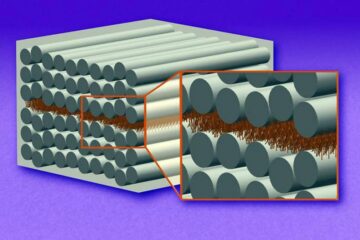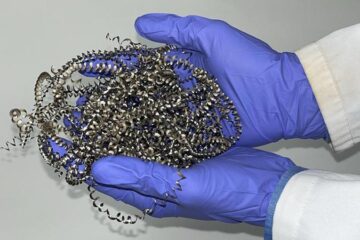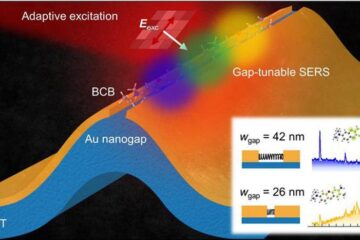Hydrogen from Diesel – efficient, residue-free, reliable Diesel vaporizer for combustion motors, burners and fuel cells

Together with a Swiss engineering company, Fraunhofer ISE developed a patented procedure to transform liquid diesel fuel into vapor without residue formation and convert it to hydrogen gas in a reformer. Therefore, with a fuel cell, the energy required in a vehicle for the on-board electronics, for example, the air-conditioning, can be generated in this manner.
The reformer in combination with a diesel vaporizer is one of many new developments that Fraunhofer ISE is presenting at the Hanover Trade Fair from 16-20 April this year.
Diesel is a conventional fuel used world-wide. It is required for mobile drive-trains in combustion motors or for diesel aggregates in grid-independent power supplies. In combination with a reformer for generating hydrogen, diesel is the ideal fuel for many fuel cell applications. For optimal dosage and reaction control, it is advantageous when the feed-in fuel is in gaseous form. During diesel vaporization, residue is typically formed, as opposed to with other liquid hydrocarbons. Therefore, Fraunhofer ISE, together with a Swiss engineering company, developed a meanwhile patented procedure whereby diesel is transformed into a gas without the formation of residues like, for example, soot. On a catalyst coated grid, the more volatile components of the diesel are partially oxidated upon addition of air/oxygen. The generated heat resulting from this process leads to the vaporization of the diesel film.
Within the business area “Hydrogen Technology”, Fraunhofer ISE develops reformer systems to generate hydrogen out of gaseous or liquid fuels such as natural gas, liquified petroleum gas, ethanol, benzene, diesel or kerosene. The researchers in Freiburg have many technologies for reforming at their disposal including catalyst development, gas purification as well as safety and control technologies. At ISE, reformers in the power range from 100Wel up to 20kWel are developed. If requested, the reformer system can be adapted to meet the specific applications and be integrated into a complete system.
Hanover Trade Fair, 16-20 April 2007
Stand of the Fraunhofer Energy Alliance
Hall 13, Stand E27
Contact Persons for Further Information
Project Leader
Dr. Thomas Aicher, Fraunhofer ISE
Phone: +49 (0) 7 6/45 88-51 94
Fax: +49 (0) 7 61/45 88-91 94
E-Mail: Thomas.Aicher@ise.fraunhofer.de
Media Contact
More Information:
http://www.ise.fraunhofer.deAll latest news from the category: Power and Electrical Engineering
This topic covers issues related to energy generation, conversion, transportation and consumption and how the industry is addressing the challenge of energy efficiency in general.
innovations-report provides in-depth and informative reports and articles on subjects ranging from wind energy, fuel cell technology, solar energy, geothermal energy, petroleum, gas, nuclear engineering, alternative energy and energy efficiency to fusion, hydrogen and superconductor technologies.
Newest articles

“Nanostitches” enable lighter and tougher composite materials
In research that may lead to next-generation airplanes and spacecraft, MIT engineers used carbon nanotubes to prevent cracking in multilayered composites. To save on fuel and reduce aircraft emissions, engineers…

Trash to treasure
Researchers turn metal waste into catalyst for hydrogen. Scientists have found a way to transform metal waste into a highly efficient catalyst to make hydrogen from water, a discovery that…

Real-time detection of infectious disease viruses
… by searching for molecular fingerprinting. A research team consisting of Professor Kyoung-Duck Park and Taeyoung Moon and Huitae Joo, PhD candidates, from the Department of Physics at Pohang University…





















